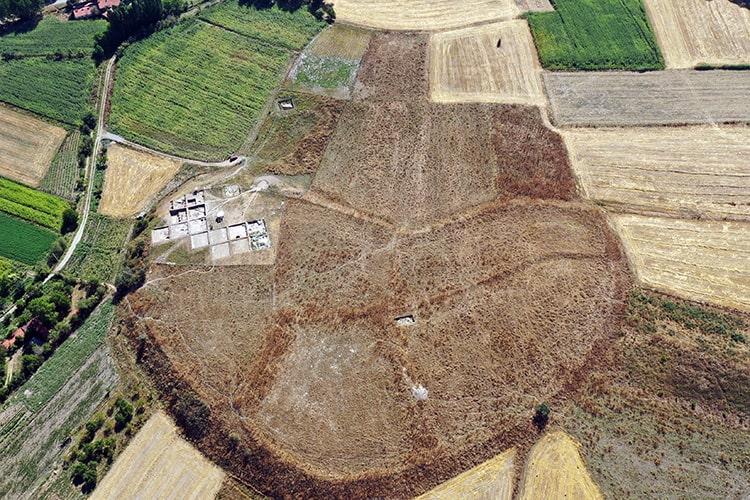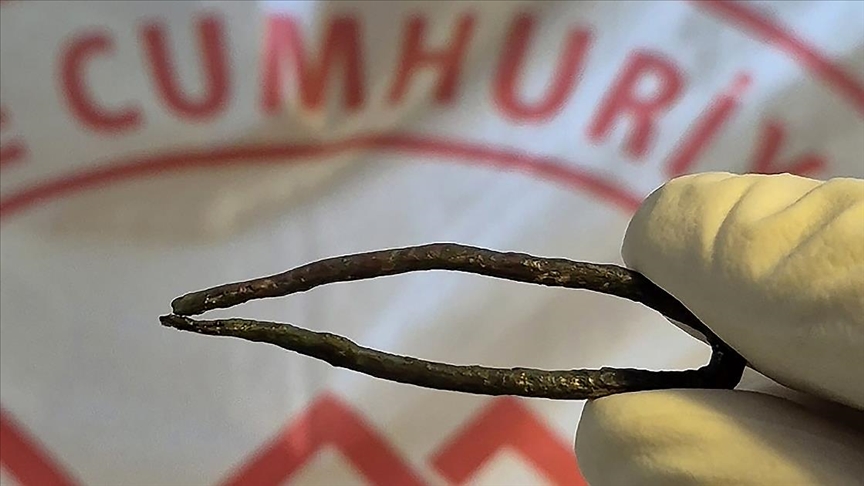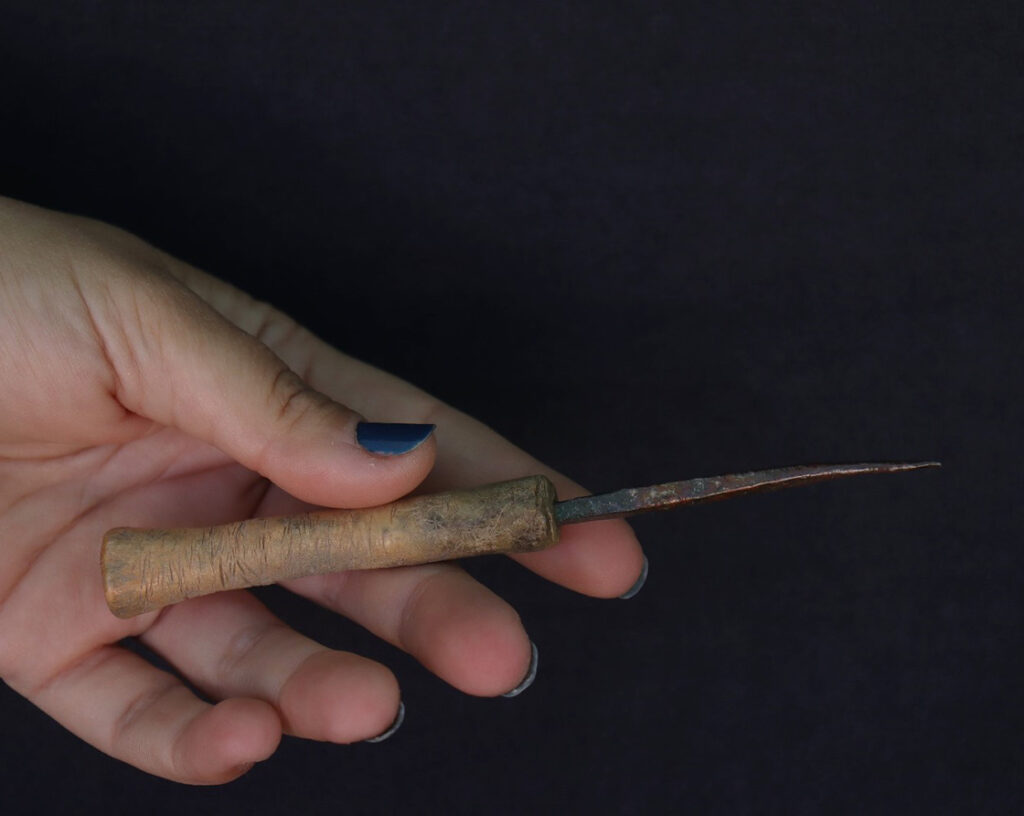
The heart of Kütahya, at Tavşanlı Mound, has yielded a 3,200-year-old piercing tool and tweezers made of bronze
Due to its heart-shaped appearance when viewed from above, Tavşanlı Mound, referred to as the heart of Kütahya, has yielded a 3,200-year-old bronze piercing tool with a bone handle and tweezers during excavations.
Tavşanlı Mound is located approximately 1.5 kilometers from the center of Kütahya and is one of the largest mounds in Anatolia, with a long settlement history dating back around 8,100 years.
The Tavşanlı Mound excavation is ongoing under the leadership of Prof. Dr. Erkan Fidan, the Head of the Department of Archaeology at Bilecik Şeyh Edebali University’s Faculty of Humanities and Social Sciences.
In the studies conducted in the layers of the Hittite Empire Period and the Late Bronze Age, a well-preserved piercing tool (bız) made of bronze and bone, dating back 3,200 years, was found intact among the remains of a workshop used for leather processing.

In the same layers, a stone pendant shaped like a bull, smaller than a fingernail, was discovered within a special structure. The bull figure, which has holes for strings where its horns should be, is emphasized as significant for representing Hittite religious beliefs in the region.

Additionally, a bronze tweezer was found in another structure, contributing to the understanding of beauty standards of the period.

The numerous artifacts obtained from the excavations provide important insights into the lifestyle, economy, and social structure of the time.

Among the findings from the previous excavation season, carbonized brain and skin remnants found in a skeleton have drawn attention as a very rare discovery in world archaeology.
You may also like
- A 1700-year-old statue of Pan unearthed during the excavations at Polyeuktos in İstanbul
- The granary was found in the ancient city of Sebaste, founded by the first Roman emperor Augustus
- Donalar Kale Kapı Rock Tomb or Donalar Rock Tomb
- Theater emerges as works continue in ancient city of Perinthos
- Urartian King Argishti’s bronze shield revealed the name of an unknown country
- The religious center of Lycia, the ancient city of Letoon
- Who were the Luwians?
- A new study brings a fresh perspective on the Anatolian origin of the Indo-European languages
- Perhaps the oldest thermal treatment center in the world, which has been in continuous use for 2000 years -Basilica Therma Roman Bath or King’s Daughter-
- The largest synagogue of the ancient world, located in the ancient city of Sardis, is being restored











Leave a Reply